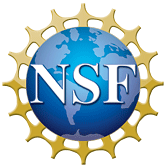Advanced microphysics schemes (such as Eulerian bin and Lagrangian superdroplet) are becoming standard tools for cloud physics research and parameterization development. This study compares a double-moment bin scheme and a Lagrangian superdroplet scheme via large-eddy simulations of nonprecipitating and precipitating cumulus congestus clouds. Cloud water mixing ratio in the bin simulations is reduced compared to the Lagrangian simulations in the upper part of the cloud, likely from numerical diffusion, which is absent in the Lagrangian approach. Greater diffusion in the bin simulations is compensated by more secondary droplet activation (activation above cloud base), leading to similar or somewhat higher droplet number concentrations and smaller mean droplet radius than the Lagrangian simulations for the nonprecipitating case. The bin scheme also produces a significantly larger standard deviation of droplet radius than the superdroplet method, likely due to diffusion associated with the vertical advection of bin variables. However, the spectral width in the bin simulations is insensitive to the grid spacing between 50 and 100 m, suggesting other mechanisms may be compensating for diffusion as the grid spacing is modified. For the precipitating case, larger spectral width in the bin simulations initiates rain earlier and enhances rain development in a positive feedback loop. However, with time, rain formation in the superdroplet simulations catches up to the bin simulations. Offline calculations using the same drop size distributions in both schemes show that the different numerical methods for treating collision-coalescence also contribute to differences in rain formation. The stochastic collision-coalescence in the superdroplet method introduces more variability in drop growth for a given rain mixing ratio.

